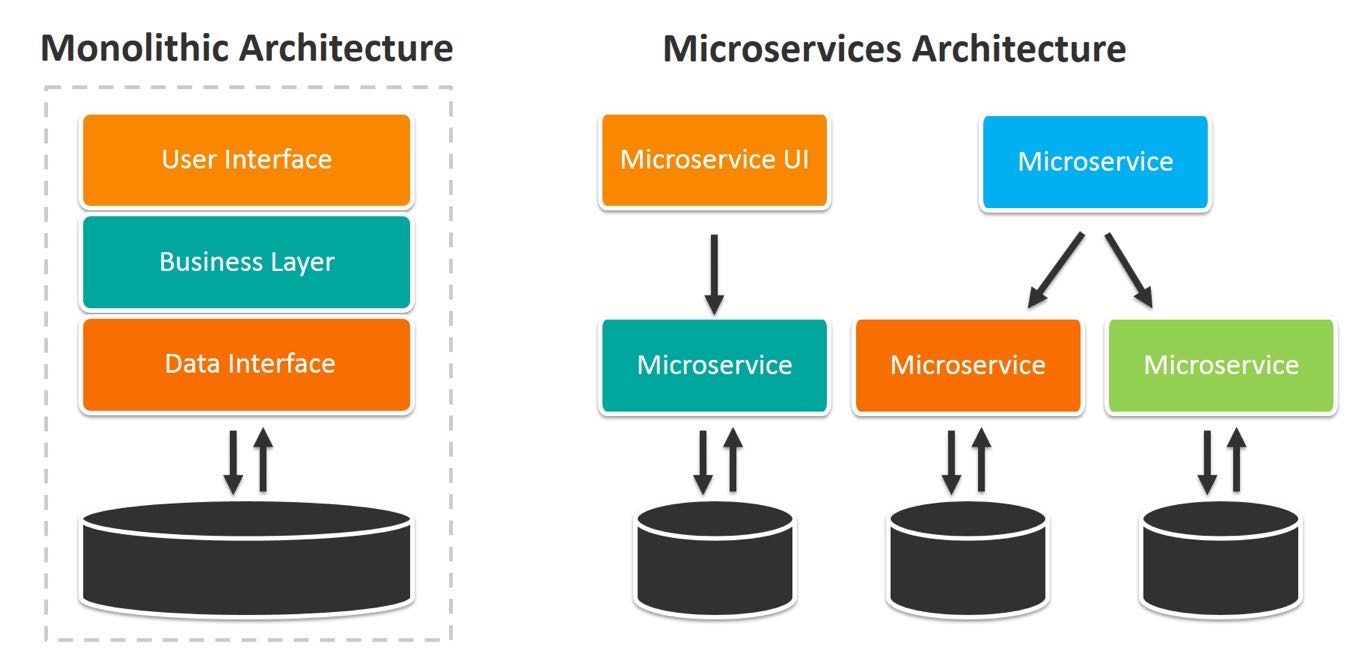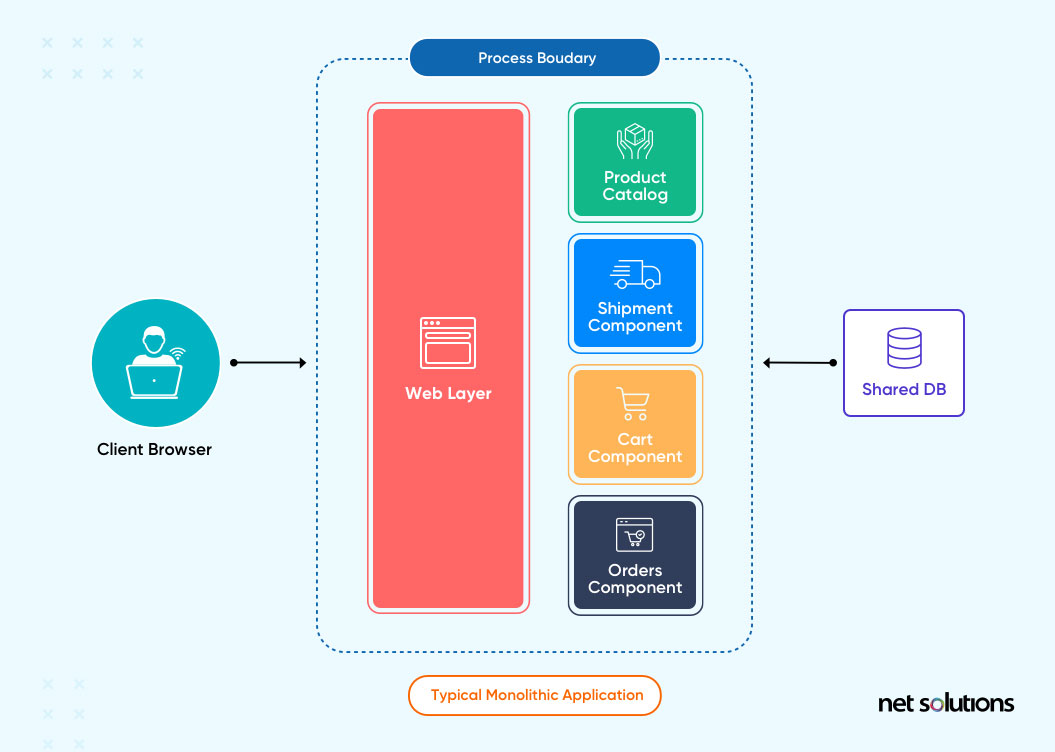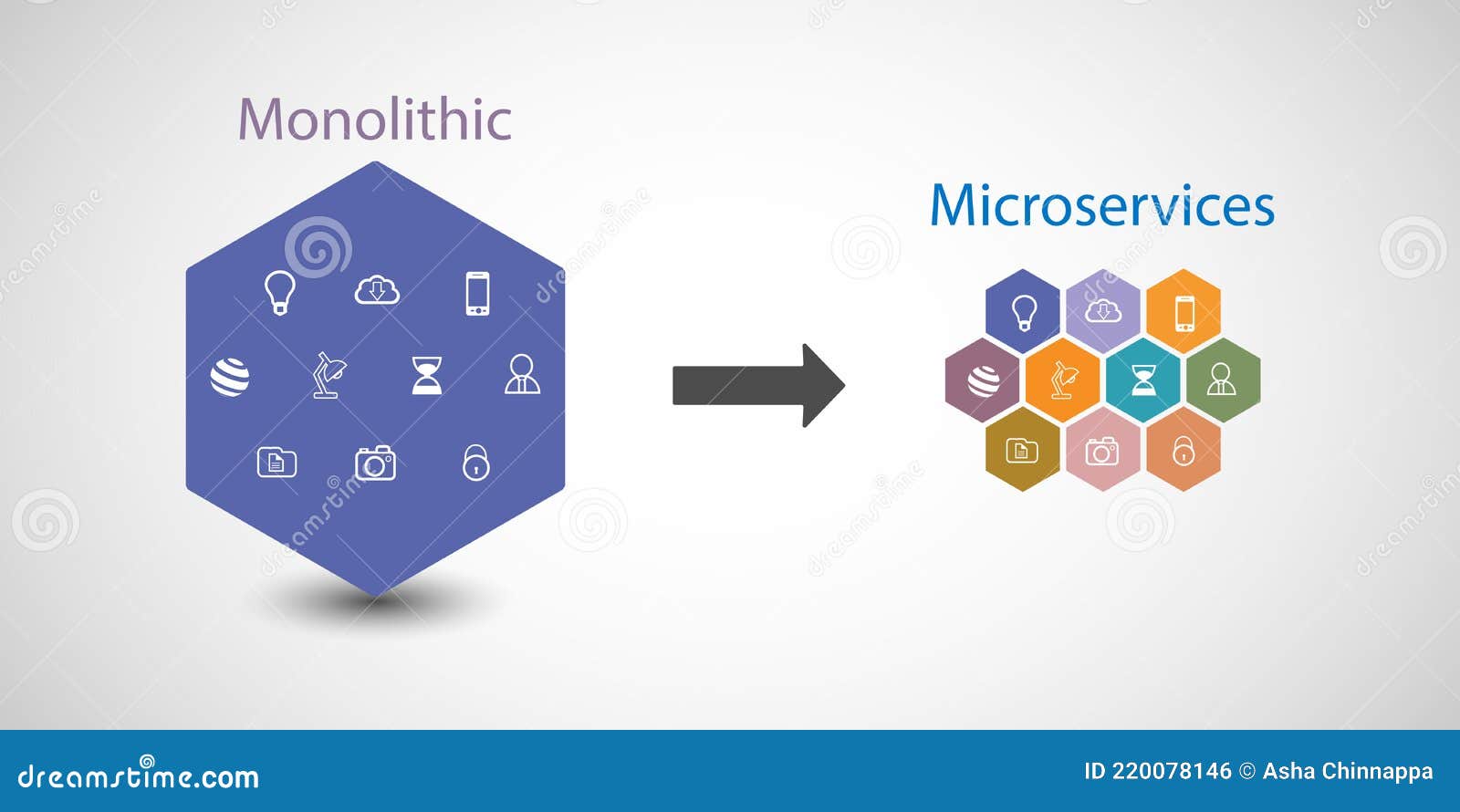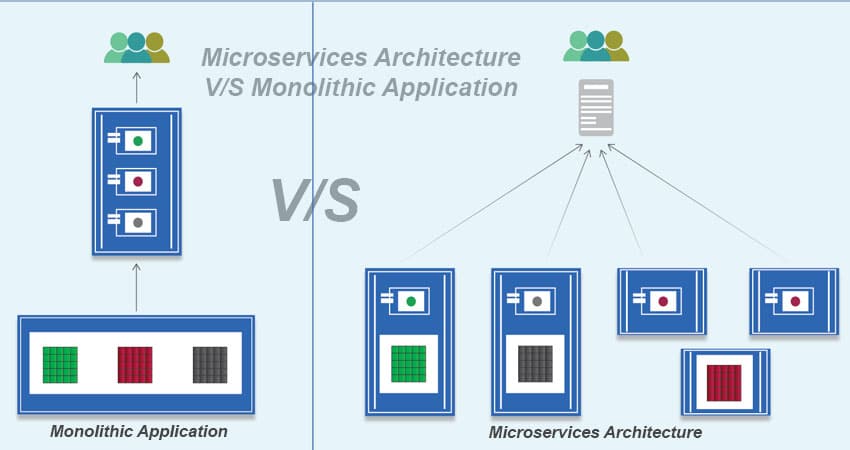What are Monolithic Applications and How Do They Work?
Monolithic applications are a type of software application that consists of a single, self-contained unit. This means that all the components of the application, including the user interface, business logic, and data storage, are combined into a single executable file or package. Monolithic applications have been the traditional choice for software development due to their simplicity and ease of deployment.
The basic structure of a monolithic application includes a user interface layer, a business logic layer, and a data storage layer. The user interface layer is responsible for handling user interactions, while the business logic layer contains the rules and processes that govern the application’s behavior. The data storage layer manages the application’s data, including storing, retrieving, and manipulating it as needed.
Monolithic applications offer several advantages, including simplicity, ease of deployment, and a clear separation of concerns. They are relatively easy to develop and test, as all the components are contained within a single unit. Additionally, deploying a monolithic application is typically straightforward, as it involves simply copying the executable file or package to a server and running it. Finally, monolithic applications provide a clear separation of concerns, as each layer is responsible for a specific aspect of the application’s functionality.
Monolithic Applications vs. Microservices: A Comparative Analysis
Monolithic applications and microservices are two popular architectural approaches to building software applications. While both approaches have their own advantages and disadvantages, they differ significantly in terms of their structure, functionality, and deployment.
Monolithic applications are self-contained units that include all the components of the application, such as the user interface, business logic, and data storage, within a single executable file or package. In contrast, microservices are a collection of small, independent services that communicate with each other through APIs. Each microservice is responsible for a specific functionality and can be developed, deployed, and scaled independently.
When comparing monolithic applications and microservices, it’s important to consider the advantages and disadvantages of each approach. Monolithic applications offer several advantages, including simplicity, ease of deployment, and a clear separation of concerns. However, they can be difficult to scale and maintain, especially as the application grows in size and complexity. Additionally, deploying changes to a monolithic application can be time-consuming and risky, as it requires deploying the entire application, rather than just the changed component.
Microservices, on the other hand, offer several advantages over monolithic applications, including scalability, maintainability, and flexibility. Each microservice can be developed, deployed, and scaled independently, making it easier to add new functionality or update existing components. Additionally, microservices allow for greater flexibility in terms of technology choices, as each service can be developed using a different technology stack. However, microservices also have their own set of challenges, including increased complexity, the need for additional infrastructure, and the potential for communication overhead between services.
When deciding between monolithic applications and microservices, it’s important to consider the specific needs and constraints of the project. Monolithic applications may be a better choice for smaller projects or projects with simple requirements, while microservices may be more appropriate for larger, more complex projects that require scalability and flexibility. Ultimately, the choice between monolithic applications and microservices will depend on the specific needs and goals of the project, as well as the expertise and resources available to the development team.
Popular Monolithic Application Frameworks and Tools
When it comes to building monolithic applications, there are a variety of frameworks and tools available to developers. These frameworks provide a set of pre-built components and tools that simplify the development process and help developers build applications more efficiently. Here are some of the most popular monolithic application frameworks and tools:
Ruby on Rails
Ruby on Rails, often referred to as Rails, is a popular web application framework for building monolithic applications. Rails is built on the Ruby programming language and provides a set of tools and conventions that simplify the development process. Rails is known for its simplicity, ease of use, and flexibility, making it a popular choice for developers building web applications.
Django
Django is a high-level web application framework for building monolithic applications. Django is built on the Python programming language and provides a set of pre-built components and tools that simplify the development process. Django is known for its scalability, security, and flexibility, making it a popular choice for developers building complex web applications.
Laravel
Laravel is a web application framework for building monolithic applications. Laravel is built on the PHP programming language and provides a set of pre-built components and tools that simplify the development process. Laravel is known for its simplicity, elegance, and flexibility, making it a popular choice for developers building web applications.
Spring Framework
The Spring Framework is a popular Java framework for building monolithic applications. Spring provides a set of pre-built components and tools that simplify the development process and help developers build applications more efficiently. Spring is known for its scalability, security, and flexibility, making it a popular choice for developers building enterprise-level applications.
ASP.NET
ASP.NET is a web application framework for building monolithic applications. ASP.NET is built on the .NET framework and provides a set of pre-built components and tools that simplify the development process. ASP.NET is known for its simplicity, ease of use, and flexibility, making it a popular choice for developers building web applications.
When choosing a framework or tool for building monolithic applications, it’s important to consider the specific needs and constraints of the project. Each framework has its own unique features, strengths, and weaknesses, and it’s important to choose the one that best fits the needs of the project. Additionally, it’s important to consider the expertise and resources available to the development team, as well as the long-term maintenance and scalability of the application.
Designing Scalable and Maintainable Monolithic Applications
Monolithic applications can be highly scalable and maintainable if designed and implemented correctly. Here are some best practices for designing scalable and maintainable monolithic applications:
Modularization
Modularization is the process of breaking down a monolithic application into smaller, independent modules. Each module is responsible for a specific functionality and can be developed, tested, and deployed independently. Modularization helps improve code reusability, reduces code duplication, and simplifies the development process. Additionally, modularization makes it easier to scale individual modules based on demand, improving the overall scalability of the application.
Encapsulation
Encapsulation is the process of hiding the implementation details of a module from the outside world. Encapsulation helps improve code maintainability, reduces the risk of bugs and errors, and simplifies the development process. Additionally, encapsulation makes it easier to modify the implementation details of a module without affecting the rest of the application, improving the overall maintainability of the application.
Separation of Concerns
Separation of Concerns (SoC) is the practice of separating the different functionalities of an application into distinct components. SoC helps improve code modularity, reduces code duplication, and simplifies the development process. Additionally, SoC makes it easier to scale individual components based on demand, improving the overall scalability of the application. SoC is a fundamental principle of software design and is essential for building scalable and maintainable monolithic applications.
Examples of Scalable and Maintainable Monolithic Applications
There are many real-world examples of scalable and maintainable monolithic applications. For instance, Twitter started as a monolithic application before transitioning to a microservices architecture. Similarly, Instagram is a monolithic application that handles millions of requests per second. These examples demonstrate that monolithic applications can be highly scalable and maintainable if designed and implemented correctly.
When designing scalable and maintainable monolithic applications, it’s important to consider the specific needs and constraints of the project. Each project has its own unique requirements, and it’s important to choose the right design principles and practices that best fit those requirements. Additionally, it’s important to consider the expertise and resources available to the development team, as well as the long-term maintenance and scalability of the application.
How to Optimize Monolithic Applications for Performance
Monolithic applications can be highly performant if designed and implemented correctly. Here are some best practices for optimizing monolithic applications for performance:
Caching
Caching is the process of storing frequently accessed data in memory for quick retrieval. Caching helps reduce the number of database queries, improves response times, and reduces the overall load on the application. Monolithic applications can benefit from caching by implementing in-memory caching solutions such as Redis or Memcached. Additionally, caching can be implemented at the web server level using solutions such as Varnish or NGINX.
Load Balancing
Load balancing is the process of distributing incoming traffic across multiple servers or instances. Load balancing helps improve the scalability and reliability of monolithic applications by ensuring that no single server or instance is overwhelmed with traffic. Load balancing can be implemented using hardware load balancers or software-based solutions such as HAProxy or NGINX.
Database Optimization
Database optimization is the process of tuning the database configuration and schema for optimal performance. Database optimization can help improve query performance, reduce response times, and increase the overall throughput of the application. Monolithic applications can benefit from database optimization by implementing indexing strategies, query optimization techniques, and database partitioning.
Tools and Techniques for Performance Optimization
There are many tools and techniques available for performance optimization of monolithic applications. For instance, profiling tools such as New Relic or AppDynamics can help identify performance bottlenecks and optimize the application accordingly. Additionally, load testing tools such as Apache JMeter or Gatling can help simulate real-world traffic and identify scalability issues.
When optimizing monolithic applications for performance, it’s important to consider the specific needs and constraints of the application. Each application has its own unique requirements, and it’s important to choose the right optimization techniques that best fit those requirements. Additionally, it’s important to consider the expertise and resources available to the development team, as well as the long-term maintenance and scalability of the application.
Security Considerations for Monolithic Applications
Monolithic applications, like any other software, are susceptible to security vulnerabilities. Here are some best practices for ensuring the security of monolithic applications:
Input Validation
Input validation is the process of ensuring that user input meets certain criteria before it is processed by the application. Input validation can help prevent security vulnerabilities such as SQL injection and cross-site scripting (XSS). Monolithic applications can benefit from input validation by implementing client-side and server-side validation using libraries such as jQuery Validation or Laravel Validation.
Access Control
Access control is the process of restricting access to certain resources or functionalities based on the user’s role or permissions. Access control can help prevent unauthorized access to sensitive data or functionality. Monolithic applications can benefit from access control by implementing role-based access control (RBAC) or attribute-based access control (ABAC) using libraries such as CanCanCan or Pundit.
Encryption
Encryption is the process of converting plaintext data into ciphertext using an encryption algorithm. Encryption can help protect sensitive data from unauthorized access or theft. Monolithic applications can benefit from encryption by implementing encryption at rest or in transit using libraries such as OpenSSL or GnuPG.
Common Security Vulnerabilities and Mitigation
There are many common security vulnerabilities that can affect monolithic applications. For instance, SQL injection vulnerabilities can be mitigated by using parameterized queries or prepared statements. Cross-site scripting (XSS) vulnerabilities can be mitigated by using output encoding or sanitization. Additionally, developers should ensure that their applications are free from known vulnerabilities by regularly updating dependencies and using tools such as OWASP ZAP or Nessus.
When designing secure monolithic applications, it’s important to consider the specific needs and constraints of the application. Each application has its own unique security requirements, and it’s important to choose the right security measures that best fit those requirements. Additionally, it’s important to consider the expertise and resources available to the development team, as well as the long-term maintenance and scalability of the application.
Monolithic Applications in the Cloud: Advantages and Challenges
Cloud computing has revolutionized the way organizations build, deploy, and manage software applications. Monolithic applications can also benefit from the cloud, but there are some unique advantages and challenges to consider.
Advantages of Deploying Monolithic Applications in the Cloud
Cloud providers offer a range of services and tools that can help organizations deploy and manage monolithic applications more efficiently. For instance, cloud providers offer virtual machines, containers, and serverless computing that can help organizations scale their applications up or down based on demand. Additionally, cloud providers offer managed databases, caching, and load balancing services that can help organizations optimize their applications for performance and reliability.
Challenges of Deploying Monolithic Applications in the Cloud
While cloud providers offer many benefits, there are also some challenges to consider when deploying monolithic applications in the cloud. For instance, monolithic applications can be difficult to scale horizontally in the cloud, as they typically require a single, large virtual machine or container to run. Additionally, monolithic applications can be more difficult to manage and maintain in the cloud, as they typically require more resources and expertise to manage and monitor.
Examples of Cloud Providers and Services for Monolithic Applications
There are many cloud providers and services that support monolithic application deployment. For instance, Amazon Web Services (AWS) offers Elastic Compute Cloud (EC2), Elastic Container Service (ECS), and Lambda for running monolithic applications. Additionally, AWS offers Relational Database Service (RDS), ElastiCache, and Application Load Balancer for optimizing monolithic applications for performance and reliability. Similarly, Microsoft Azure offers Virtual Machines, Container Instances, and Azure Functions for running monolithic applications, and Azure SQL Database, Azure Cache for Redis, and Azure Application Gateway for optimizing monolithic applications.
When deploying monolithic applications in the cloud, it’s important to consider the specific needs and constraints of the application. Each application has its own unique requirements, and it’s important to choose the right cloud provider and services that best fit those requirements. Additionally, it’s important to consider the expertise and resources available to the development team, as well as the long-term maintenance and scalability of the application.
The Future of Monolithic Applications: Trends and Predictions
Monolithic applications have been a staple of software development for decades, but the landscape of software development is constantly changing. Here are some trends and predictions for the future of monolithic applications.
Emerging Trends in Monolithic Applications
One trend in monolithic applications is the move towards containerization. Containerization allows developers to package monolithic applications into lightweight, portable containers that can be easily deployed and managed in different environments. Another trend is the use of serverless computing, which allows developers to run monolithic applications without having to manage the underlying infrastructure.
Predictions for Monolithic Applications
While microservices and serverless architectures are gaining popularity, monolithic applications will continue to play an important role in software development. In fact, some experts predict that monolithic applications will make a comeback as developers realize the benefits of simplicity and ease of deployment. Additionally, as containerization and serverless computing become more mature, monolithic applications will become easier to deploy and manage in these environments.
Implications for Developers and Organizations
As the landscape of software development continues to evolve, developers and organizations must stay up-to-date with the latest trends and technologies. This means understanding the benefits and drawbacks of different architectures, including monolithic applications, microservices, and serverless computing. Additionally, developers and organizations must ensure that their applications are scalable, maintainable, and secure, regardless of the architecture.
When it comes to the future of monolithic applications, it’s important to stay informed and adaptable. By staying up-to-date with the latest trends and technologies, developers and organizations can ensure that their applications are optimized for performance, reliability, and security, regardless of the architecture.







